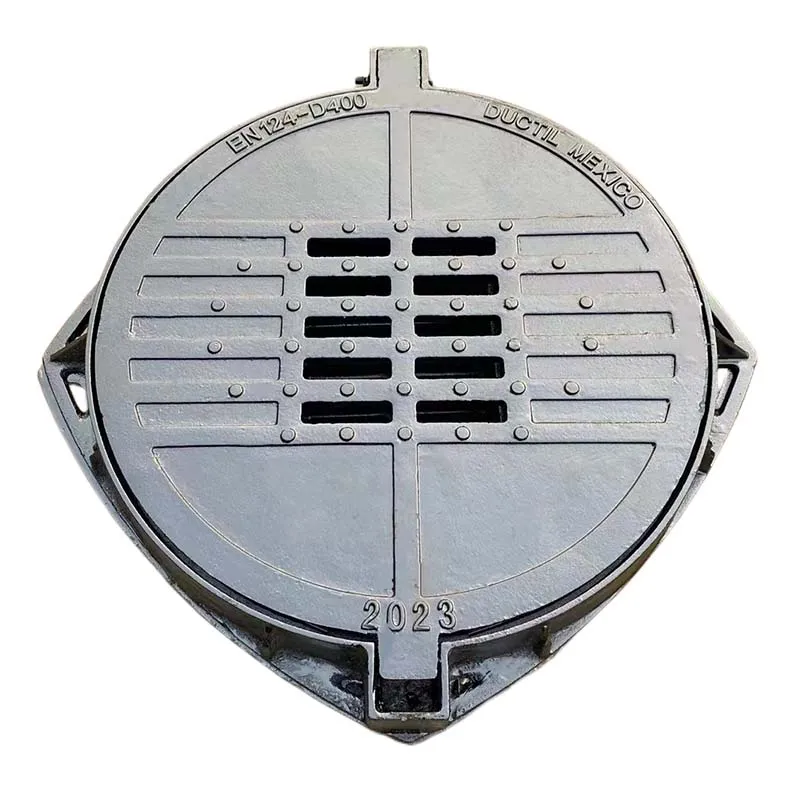Gully Grate Dimensions and Specifications for Efficient Drainage Systems
Understanding Gully Grate Sizes A Comprehensive Overview
Gully grates are essential components in modern drainage systems, playing a critical role in managing surface water runoff in urban environments. Their design and size can significantly influence the efficiency of stormwater management. In this article, we will explore the various sizes of gully grates, their significance, and factors to consider when selecting them for specific applications.
What are Gully Grates?
Gully grates are covers placed over drainage inlets or pits, allowing water to enter while preventing debris and larger objects from clogging the system. They are typically structured as a metal or reinforced plastic frame with openings that permit water to flow through. Gully grates can be found in streets, parking lots, sidewalks, and other areas where water accumulation can pose a risk to safety and infrastructure.
Importance of Size in Gully Grates
The size of gully grates is crucial for several reasons
1. Hydraulic Efficiency The size of the openings in a gully grate determines how quickly water can enter the drainage system. Larger openings can facilitate more rapid water flow during heavy rainfall, reducing the risk of flooding. Conversely, excessively large grates can allow larger debris to enter, potentially causing blockages further down the drainage line.
2. Debris Control A well-sized gully grate not only promotes efficient water flow but also limits the entry of silt, leaves, and other debris. Ideally, the openings in the grate should allow water to enter while retaining larger particles, preventing them from causing clogs.
3. Safety Considerations In public areas, the grate’s size and design must minimize the risk of injury to pedestrians. For example, grates with excessively large openings can pose a tripping hazard, especially for bicycles or strollers.
Common Gully Grate Sizes
Gully grates come in a variety of sizes and styles, designed to meet the specific needs of different environments. Common dimensions include
gully grate sizes

- Standard Sizes The most commonly used gully grates range in size from 600mm x 600mm (approximately 24 inches x 24 inches) to 1000mm x 1000mm (approximately 39 inches x 39 inches). These sizes are typically suited for urban areas with moderate rainfall.
- Specialized Grates For high-capacity needs in areas prone to extreme weather, larger grates measuring up to 1200mm x 1200mm (approximately 47 inches x 47 inches) or more may be utilized. These larger designs are often implemented in flood-prone zones or heavy traffic areas where quick drainage is essential.
- Custom Sizes In more specialized applications, gully grates can also be customized to fit unique configurations or requirements. This flexibility allows designers to optimize drainage solutions tailored to specific locales.
Factors to Consider When Selecting Gully Grate Sizes
When choosing the appropriate size for gully grates, several factors must be evaluated
1. Local Climate Areas with heavier rainfall will require larger grates to accommodate increased water flow. Conversely, regions with minimal precipitation may benefit from smaller, standard grates.
2. Type of Surface The surface material adjacent to the gully grate can affect debris entry. Grates near landscaped areas may need to be sized differently than those adjacent to paved surfaces.
3. Traffic Volume In high-traffic zones, grates must be robust enough to handle vehicular pressure without bending or breaking. This consideration often correlates with overall grate size.
4. Maintenance Accessibility Larger or complex gully grates may necessitate more frequent maintenance to ensure effective operation. Thus, easy access for cleaning and upkeep should be a priority in the design phase.
Conclusion
Gully grate sizes are a vital consideration in effective drainage design, impacting everything from hydraulic efficiency to public safety. Understanding the various sizes and their implications can help engineers and city planners create safe, efficient urban environments capable of managing stormwater effectively. By thoughtfully selecting the appropriate gully grate size, communities can minimize flooding risk and enhance their overall infrastructure resilience.
-
The Smarter Choice for Pedestrian AreasNewsJun.30,2025
-
The Gold Standard in Round Drain CoversNewsJun.30,2025
-
The Gold Standard in Manhole Cover SystemsNewsJun.30,2025
-
Superior Drainage Solutions with Premium Gully GratesNewsJun.30,2025
-
Superior Drainage Solutions for Global InfrastructureNewsJun.30,2025
-
Square Manhole Solutions for Modern InfrastructureNewsJun.30,2025
-
Premium Manhole Covers for Modern InfrastructureNewsJun.30,2025
